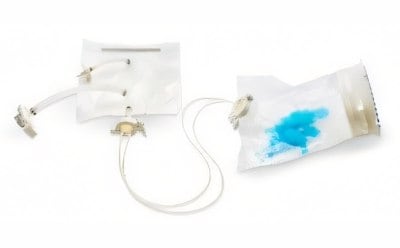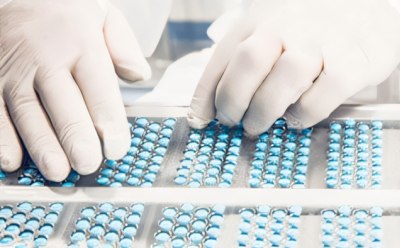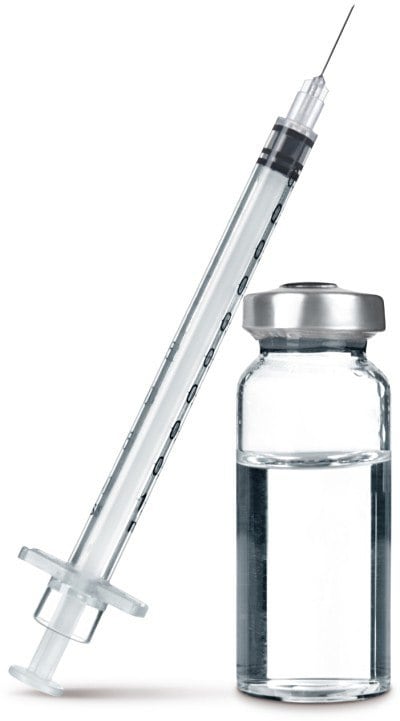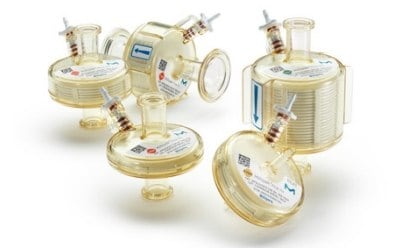Final Fill Strategies

Single-use technologies reduce manufacturing time and costs by eliminating cleaning and validation steps. Along with these benefits, however, come new considerations including chemical compatibility of plastic components and the shift of critical validation strategies from the end-user to the supplier.
Optimizing Sterile Sampling Methodologies
More stringent validation requirements and increased use of Quality by Design (QbD) and Process Analytical Technologies (PAT) demand greater scrutiny of sampling processes. Traditional sampling methods do not meet the expectations of regulatory authorities, due to the risk of contamination through open ports in the manufacturing system and the potential for operator error.
Implementing an optimized sampling process reduces risk and increases productivity. An effective sterile sampling system can reduce the potential for contamination, using good sampling practices to monitor filter effectiveness and assess process and product quality.
Assessing the Chemical Compatibility of Single-use Components
Single-use equipment is typically manufactured from polymeric materials. Process fluids, depending on their chemical composition, might negatively interact with these polymers. The challenge is finding materials of construction which are compatible with the manufacturer’s raw materials and process streams. Moreover, it is often difficult to find detailed guidance on the steps needed to demonstrate chemical compatibility. Regulatory and guidance documents cover a wide variety of products and processes and do not provide detail on specific methods or procedures.
Proper selection and qualification of single-use equipment and materials for pharmaceutical manufacturing should include a thorough assessment of the chemical compatibility of the product contact components. It is important to partner with a supplier who:
- Understands the manufacturer’s process and has an in-depth knowledge of single-use materials
- Assists in assessing process risks and recommends how to appropriately mitigate those risks
Meeting Stringent Requirements of a Final Fill Process with Proper Assembly Design
The implementation of single-use technologies in the final filling process is steadily increasing. Single-use technologies need to meet the stringent requirements for this final process step – fluid path sterility, integrity, operational safety, and fit for purpose of the single-use assembly. New single-use final fill solutions can effectively meet these requirements with proper assembly design for integration in a filling machine. Evaluation of risks and regulatory compliance are among the key design considerations for a sterile filtration process, making it essential to evaluate supporting documentation to enable appropriate validation.
Increasing Productivity and Managing Risk
Drug manufacturers face pressure to efficiently and effectively advance pipeline assets while minimizing risks associated with product loss, product contamination, sterility, and patient safety. Single-use fill-finish assemblies can improve filling line productivity – providing flexibility to manufacture a variety of drug products and fill volumes while mitigating contamination risks. However, managing implementation and regulatory risks can be a challenge with single-use fill-finish assemblies, requiring rigorous process validation to ensure compliance with regulatory guidelines. Steps which can be taken to ensure this validation are:
- A systemic and thorough evaluation of the assembly manufacturing and filling process
- An accurate interpretation of regulatory requirements
- A stepwise approach to identify and mitigate risks associated with process components
Visit our document search for data sheets, certificates and technical documentation.
Workflow

Classical Pharmaceutical Formulation and Manufacturing
Overcoming increasingly complex obstacles in small molecule drug manufacturing requires a strategic approach to processing, formulation, regulatory compliance, raw material quality, and supplier selection

Liquid Formulation Strategies
Sterile liquid applications are often injected into the body, making it critical to minimize risk by choosing the right process to purify the API, identifying suitable excipients, defining appropriate process validation, and selecting the right filters.

Solid Formulation Strategies
Typical solid dose challenges include API solubility and final formulation API stability, controlling total cost of manufacturing, and creating a robust, homogeneous tablet free of complications during packaging or storage.

Sterile Filtration Strategies
Drug products must be free from bacteria and other microorganisms to ensure patient safety, requiring expert use of aseptic filtration for pharmaceutical products that cannot be terminally sterilized.
How Can We Help
In case of any questions, please submit a customer support request
or talk to our customer service team:
Email custserv@sial.com
or call +1 (800) 244-1173
Additional Support
- Calculators & Apps
Web Toolbox - science research tools and resources for analytical chemistry, life science, chemical synthesis and materials science.
- Customer Support Request
Customer support including help with orders, products, accounts, and website technical issues.
- FAQ
Explore our Frequently Asked Questions for answers to commonly asked questions about our products and services.
To continue reading please sign in or create an account.
Don't Have An Account?
